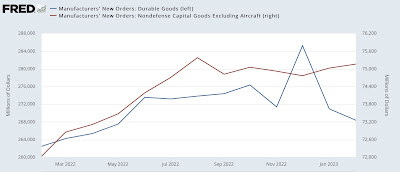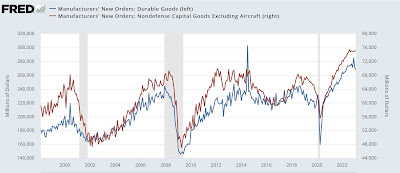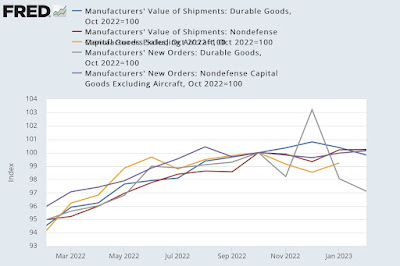Economics
There is now only one significant manufacturing datapoint that is not flat or down – but it’s the one the NBER relies upon
– by New Deal democratI am increasingly of the opinion that at the moment, the only two economic data series that are important are nonfarm payrolls…

– by New Deal democrat
I am increasingly of the opinion that at the moment, the only two economic data series that are important are nonfarm payrolls and the personal consumption expenditure deflator. That’s because almost every other important metric of the economy is either flat or declining. But payrolls keep chugging along (as evidenced by yesterday’s initial claims report showing that layoffs are figuratively non-existent). And the PCE deflator, which covers a broader spectrum than the CPI, keeps helping two coincident indicators important to the NBER, namely real personal income and real manufacturing and trade sales, remain in the plus column.

Argentina Is One of the Most Regulated Countries in the World
In the coming days and weeks, we can expect further, far‐reaching reform proposals that will go through the Argentine congress.
Crypto, Crude, & Crap Stocks Rally As Yield Curve Steepens, Rate-Cut Hopes Soar
Crypto, Crude, & Crap Stocks Rally As Yield Curve Steepens, Rate-Cut Hopes Soar
A weird week of macro data – strong jobless claims but…
Fed Pivot: A Blend of Confidence and Folly
Fed Pivot: Charting a New Course in Economic Strategy Dec 22, 2023 Introduction In the dynamic world of economics, the Federal Reserve, the central bank…


















